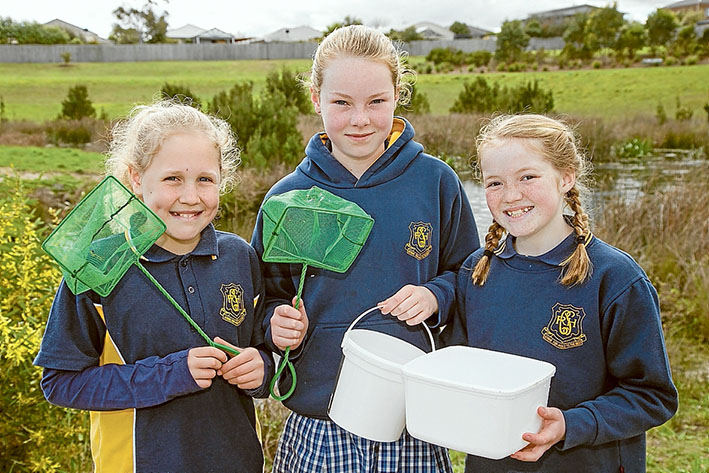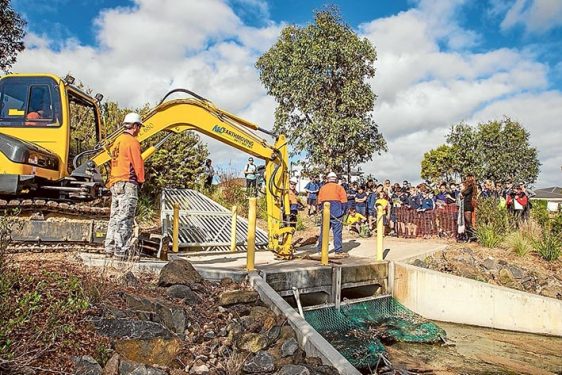

Photo: Group pic of ambassador’s from various schools looking at the storm water catchment area where litter catchers are installed.
ABOUT 50 primary school “marine ambassadors” last week had a close look at trapped pollutants at Narambi Reserve, Mornington.
The experience was part of the Dolphin Research Institute’s ‘i sea, i care’ school ambassador program, a partnership with Mornington Peninsula Shire.
Pupils saw and smelt rotting waste being emptied from a gross pollution trap which stops stormwater pollutants washed from streets reaching Port Phillip.
Emptying the trap came just weeks after a significant algal bloom was seen in Mornington harbour.
The ambassadors, trained as peer educators, will go back to their schools and share their experiences. Their goal is to reduce pollutants entering drains and, ultimately, threatening our marine treasures.
Cleaning the pollution traps is a massive financial cost to state and local government – but poses a bigger cost to the environment if they weren’t there.
“The institute is concerned about the link between water quality in the bay and the health of our dolphins,” DRI executive director Jeff Weir said. “If it’s not safe for us to swim in our bay after rain, then it’s also not safe for our dolphins, either. We need to do much better.”
The institute is working on a dolphin health study funded by the federal government.
Mr Weir said the Narambi Reserve’s wetlands are a “world-class” example of how to treat stormwater pollution. Litter traps capture the larger pollution and the ponds let sediment settle while plants absorb many of the soluble pollutants.
“In moderate rains the water will be quite clean by the time it leaves this site to flow into Port Phillip down Tanti Creek,” Mr Weir said. “In big storms it overflows and everything goes to the bay.
“Most drains don’t have these systems and empty directly into the creeks and rivers that flow to our bays.
“Treatment systems help, when they are present, but the best solution is to stop things getting into drains in the first place.”


